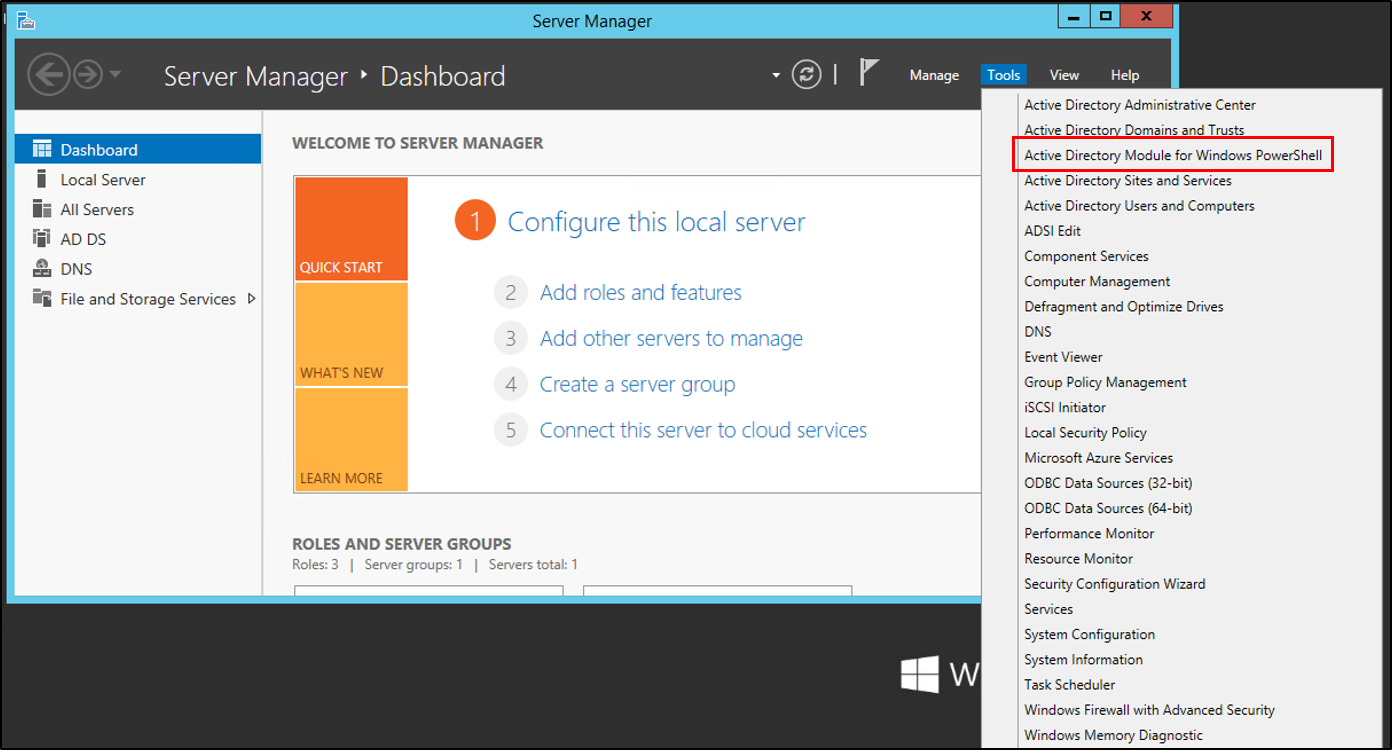How to Set Up Active Directory in Windows Server and Upgrading domain controllers
Installing Active Directory and upgrading the server to a domain controller in Windows Server operating systems are vital steps in forming a network infrastructure. As a central management service in the Windows environment, Active Directory provides facilities for managing users, groups, policies, access, and security settings.
Installing Active Directory on Windows Server and upgrading the server as a domain controller allows you central management, facilitating authentication, ease of policy management, resource optimization, and high security.
This article will review installing Active Directory and upgrading the server to a domain controller. These steps include the settings and configurations necessary to create a domain structure, add a domain controller, DNS settings, and other related security settings.
By following these steps, you can create a strong and secure management environment for your network and centrally manage users and resources. Advanced security settings, access policies, and other multipurpose facilities will also be available.
The rest of this article explains the steps to proceed quickly and confidently. So, join us on this path to install Active Directory, upgrade the server to a domain controller, and take advantage of the benefits of central management and its high security.
If you don’t have a Windows server yet, go to the Windows virtual server purchase page and choose the right one from the different plans. If you are going to start your Windows server yourself, it is better to use the latest version. We have brought you the tutorial for setting up Windows Server 2022.
How do you install Active Directory on the Windows Server?
This section will teach you how to install Active Directory on Windows Server and upgrade the server to a domain controller. So, if you want to install Active Directory on your Windows server, follow all these steps.
In the first step, open the server manager. To search for the program, press the “Windows” button on your keyboard and type “Server Manager.” After opening the program, as in the image below, go to the next step: installing Active Directory Services domain services.
Right-click “Manage” in the Server Manager window and select “Add Roles and Features.” This will open the Add Roles and Features Wizard, which will take us to the part where we install Active Directory Domain Services. Click on the next option.
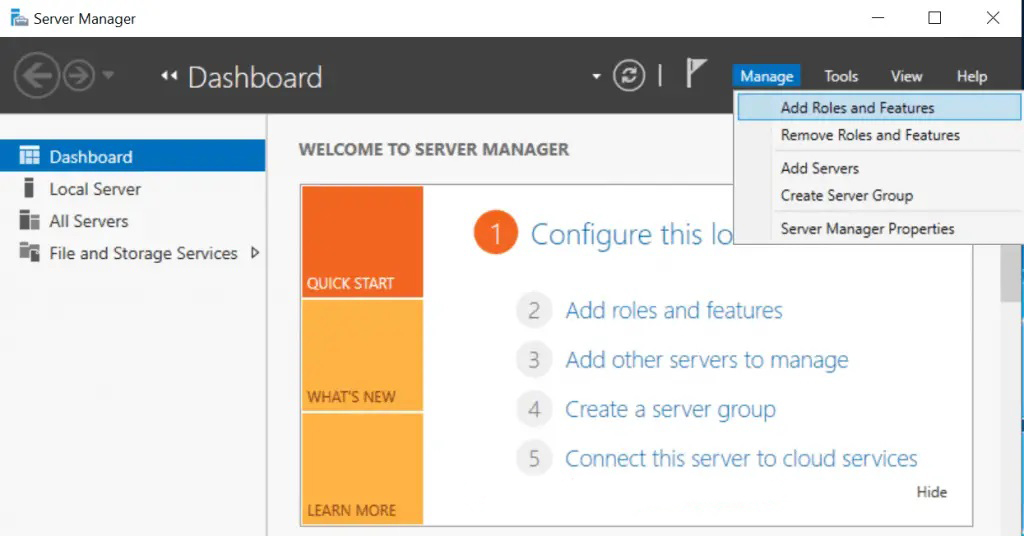
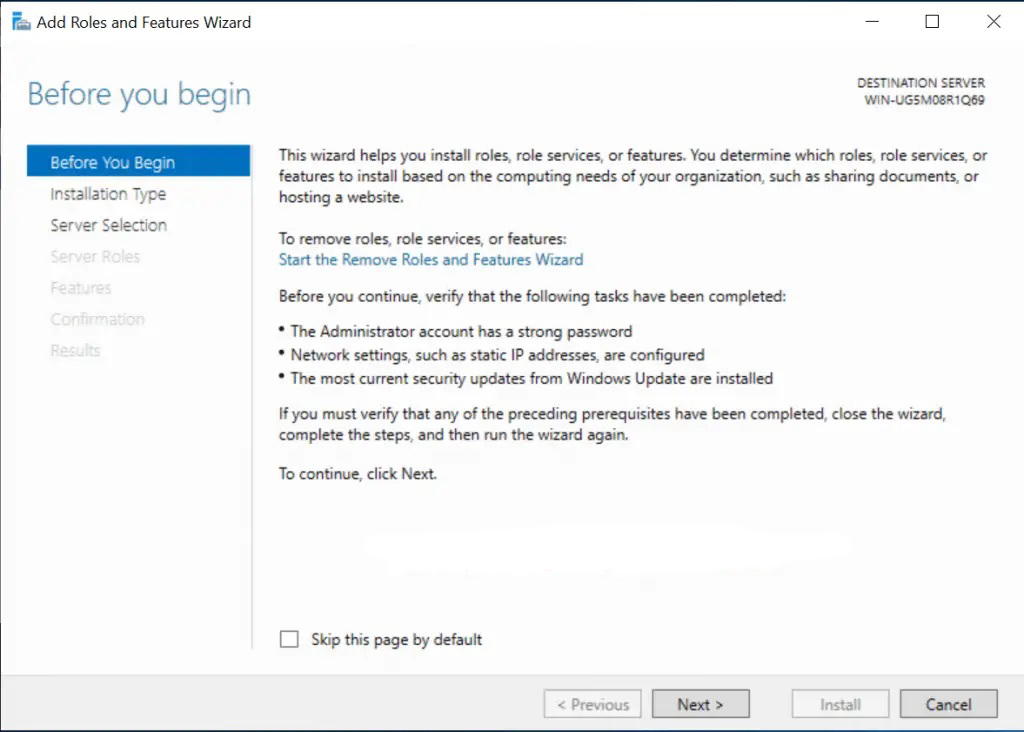
2. We need to reach the Installation Type settings here. In the “Installation Type” section, select the Role-based or feature-based installation option and click Next.
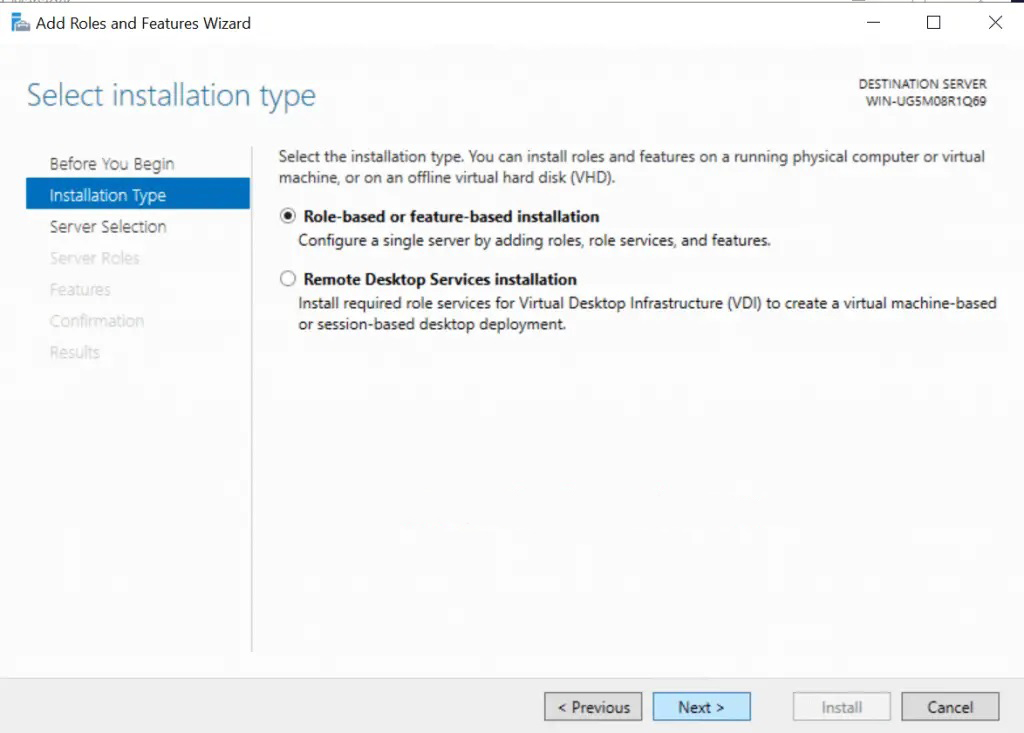
3. In this step, select “Select destination server,” the server on which you intend to install AD DS, and click Next. Here we are going to select our local server.

4. Here, we are going to select server roles. The previous step will take you to the next page, shown below. Here, you will see multiple options with blank checkboxes. As you can guess, we will select Active Directory Domain Services.

5. We reach the section of adding features. Immediately after selecting that option, a new team will appear. Click the “Add Features” tab and press “Next.”
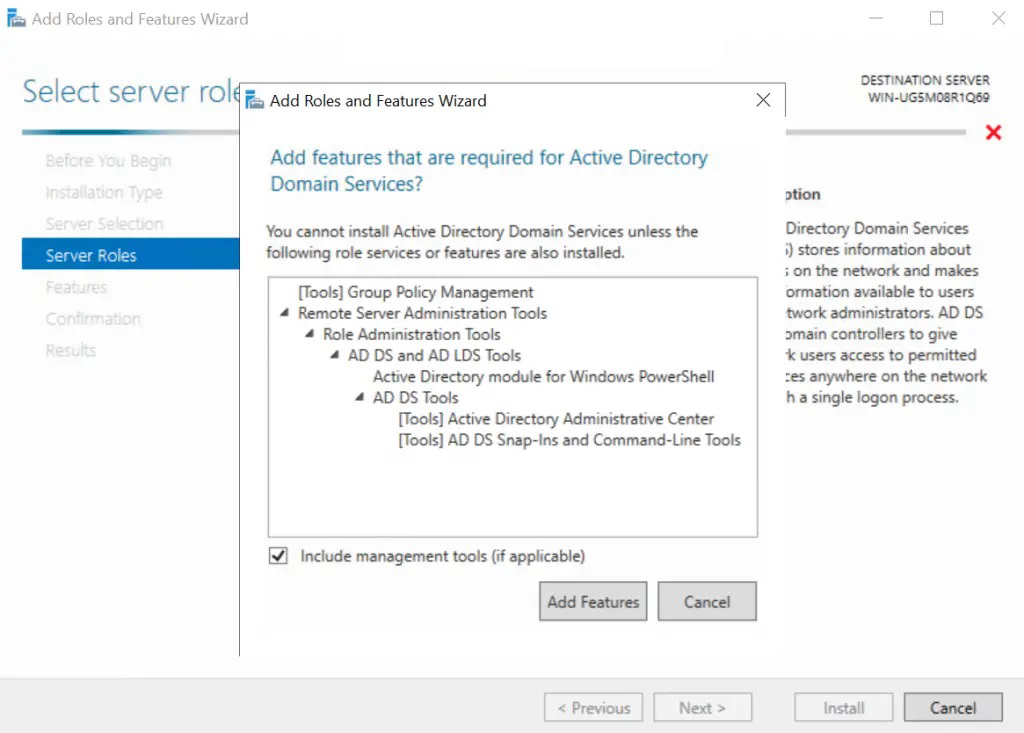
After the “Select features” step, click “Next” to access the AD DS installation.

6. We are going to configure AD DS here. As shown below, you will be presented with the following page: ” I’ve Directory Domain Services.” Click on Next here.

7. At this stage, you must confirm your choices! The next page is about verifying the installation before actually installing it. If you’re sure you’ve made your selections, click Install. It is optional to select the option that restarts the server whenever needed. After that, click on Close.

Upgrade to a domain controller.
After Active Directory Domain Services is installed, the last step is to upgrade it to a domain controller.
To upgrade to a domain controller, go to the Server Manager section. There is a yellow warning bar next to the “Manage” tab. Click on it and select “Promote this server to a domain controller.”
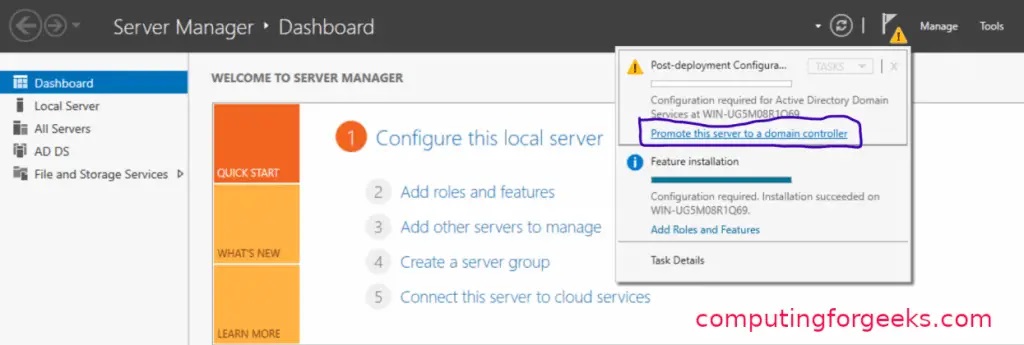
2. In the next step, we must add a new Forest. A new window titled (Active Directory Domain Services Configuration Wizard) will be displayed. We will add a new Forest, but you can choose other options to do something different now. Enter your organization’s primary domain name. After selecting your choice, click Next.
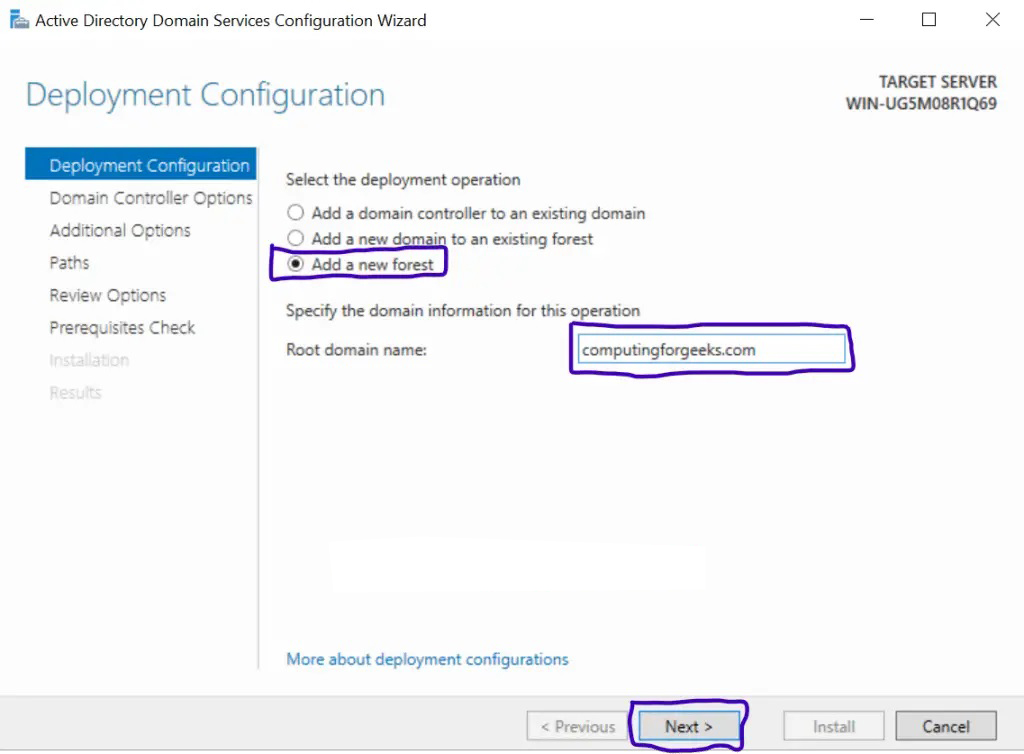
3. Check the default options and enter your password in the domain controller options. Then click “Next”.
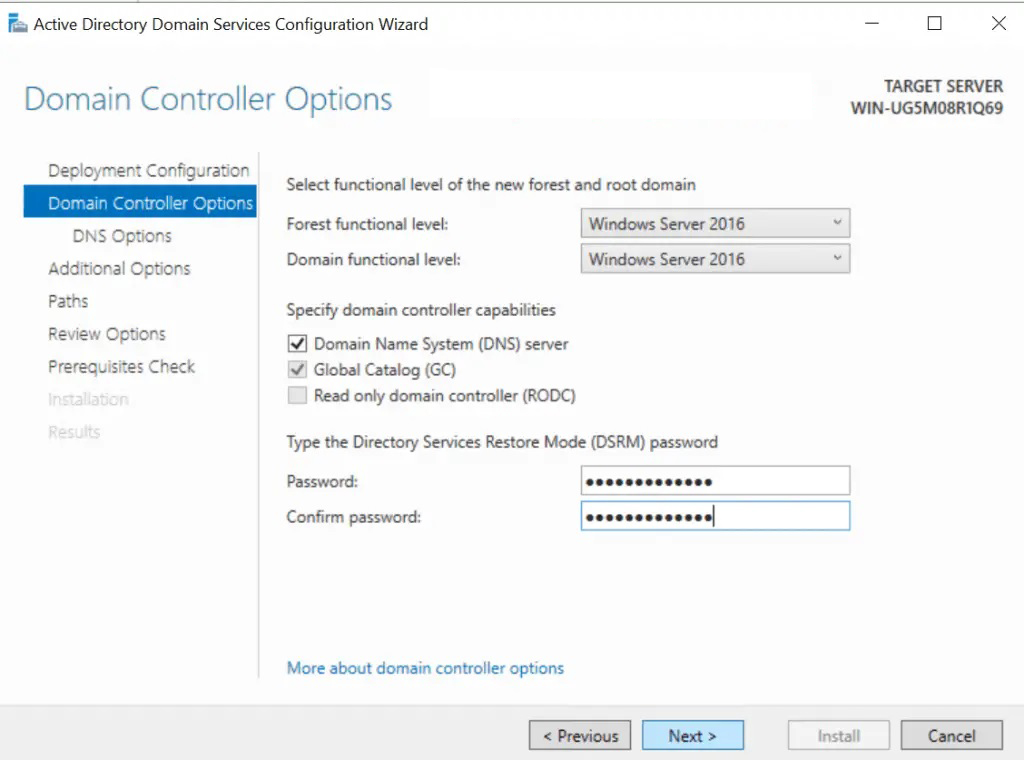
4. On the next page (DNS options), you will probably see an error saying, “A delegation for this DNS server cannot be created because the authoritative parent zone nameserver cannot be found.” Could you ignore it and click Next?
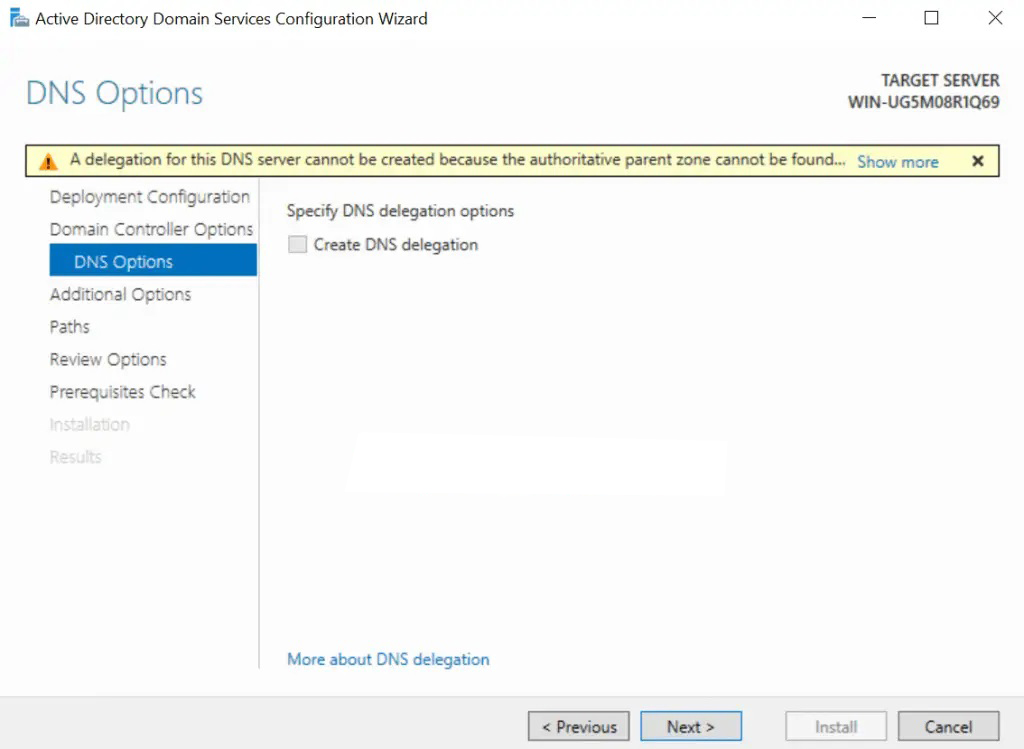
5. On the next page, you can leave the NetBIOS domain name as the default or change it; make sure it’s no longer than 15 characters. Then click “Next.”
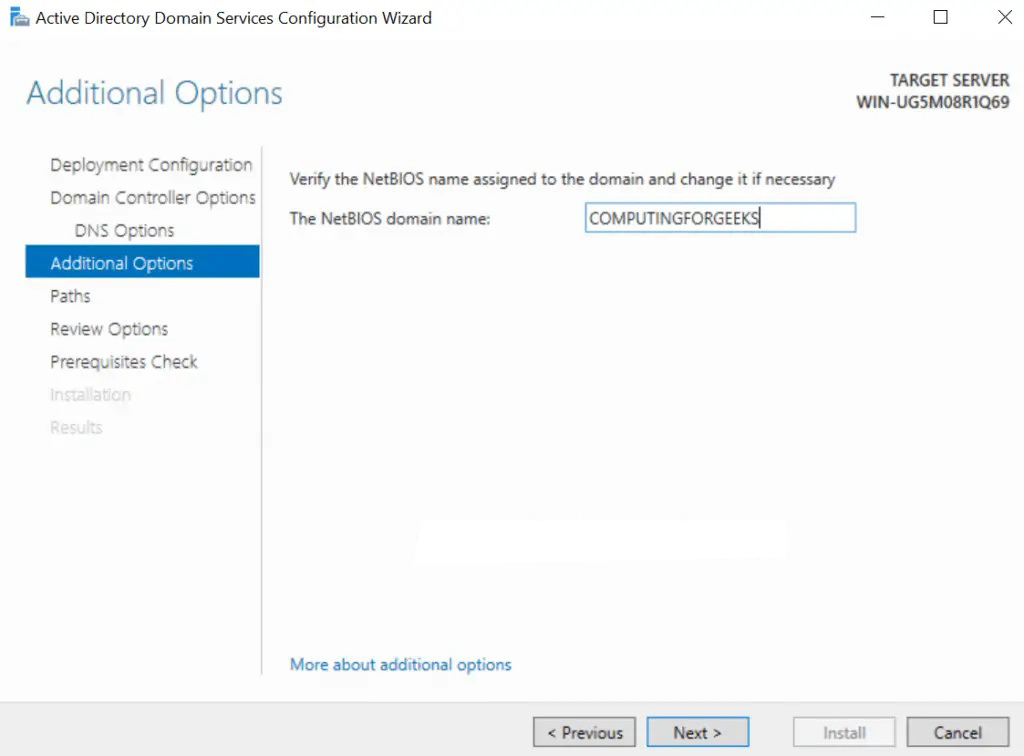
6. Leave the paths as default and click Next.
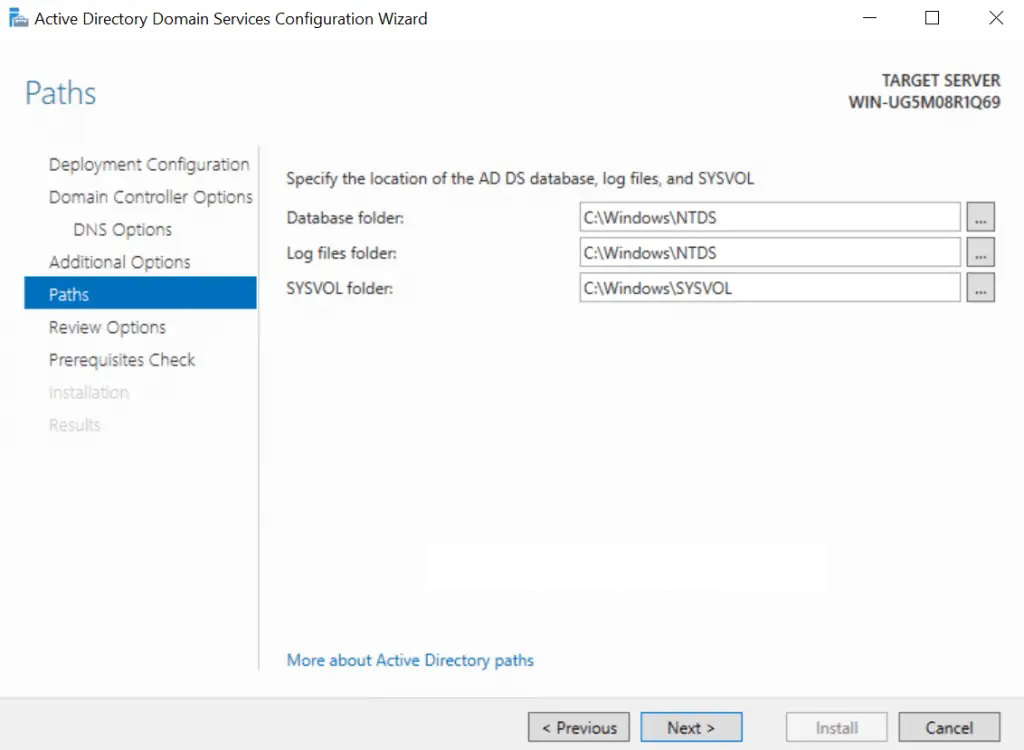
7. The server will allow you to review your work so far. If you are happy with your selections, click Next.
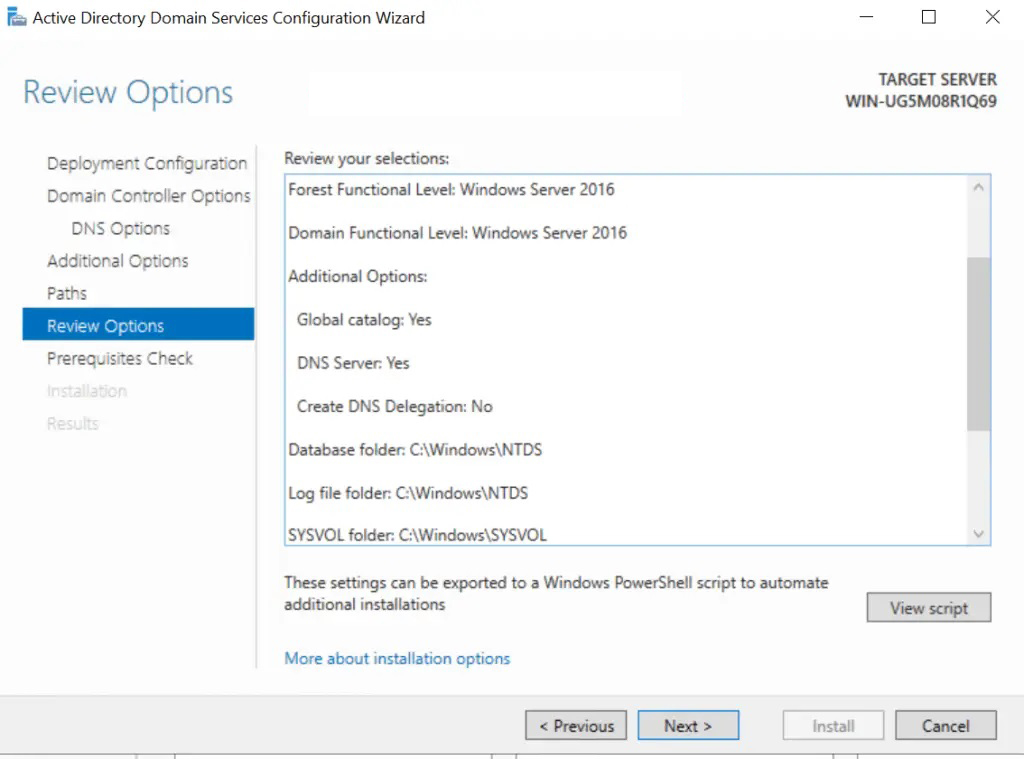
8. In this step, the prerequisites will be checked before installing Active Directory Services. If you encounter any errors, please review them and correct anything that needs to be fixed in the previous steps. If everything is fine, click “Install.”
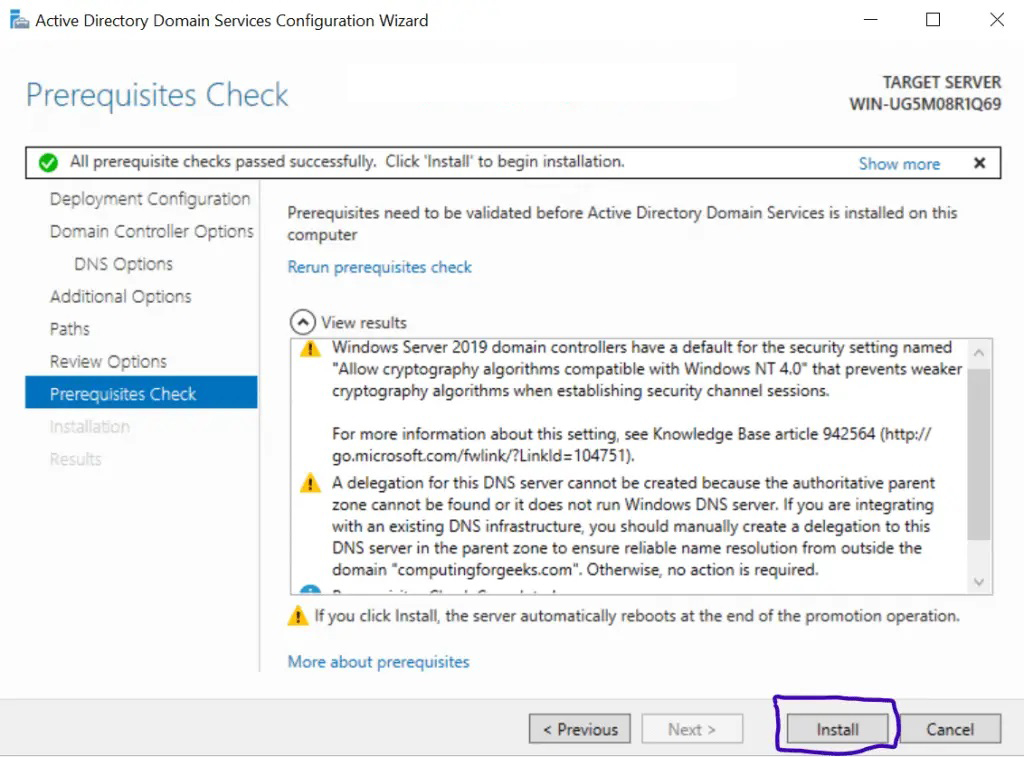
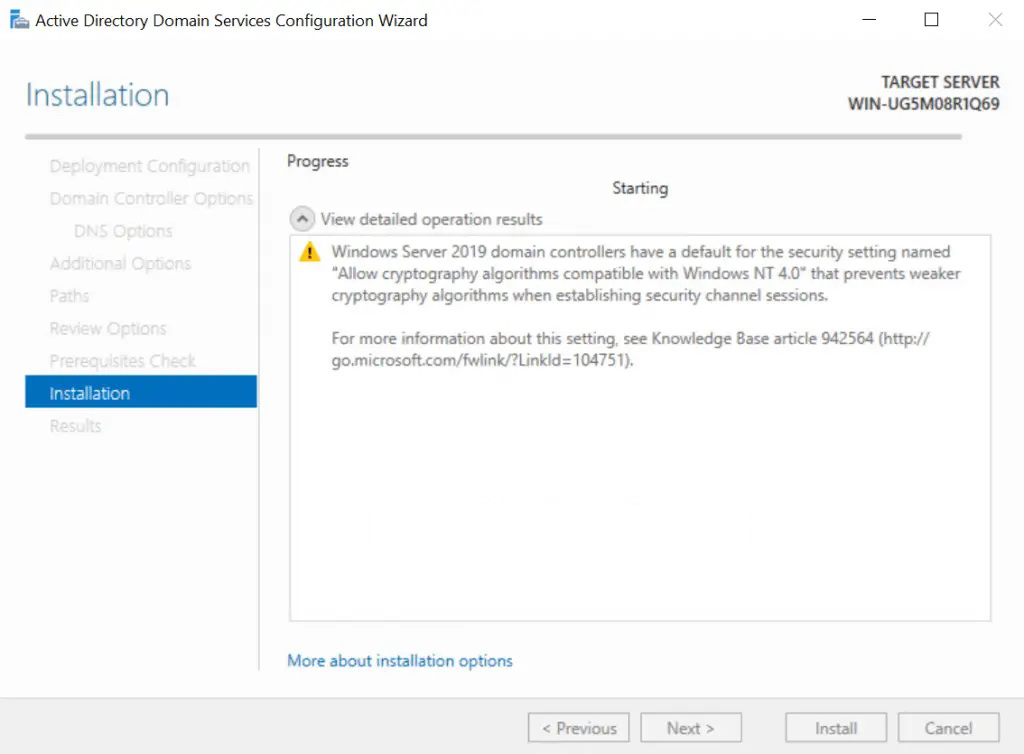
9. After that, the server will restart, and you can log in to the domain using the credentials you set in step 12.

conclusion
Installing Active Directory on Windows Server and upgrading the server to a domain controller is critical to creating a robust and secure network infrastructure. Installing Active Directory allows you to have advanced management features, including managing users, groups, policies, access, and security settings. Also, by upgrading the server to a domain controller, you can create a central and secure management environment for your network.
This article reviewed the complete steps of installing Active Directory in Windows Server and upgrading the server to a domain controller. Each step is explained in detail, from creating a new forest to configuring various settings such as DNS and NetBIOS domain names.
Installing Active Directory and upgrading the server to a domain controller enables you to manage users and resources and enable advanced security features centrally. Also, add more advanced features like access settings, policies, and versatility to your network with a central management environment.
Following this article’s installation and configuration steps, you can create a secure and robust network environment and improve your network management and security. Also, by using the advanced features of Active Directory, you can centrally manage users and resources and improve the applications and services you need in the domain controller.
Therefore, by performing the Active Directory installation steps in Windows Server and upgrading the server to a domain controller, you will be able to significantly improve the management and security of your network and take advantage of the central management and advanced features of Active Directory.
If you have any questions, you can share them with us in the comments section.
Frequently Asked Questions:
- What is the difference between Active Directory and a Domain Controller?
Active Directory is a service provided in Windows Server that provides centralized management of users, groups, policies, and network resources. The domain controller also has a unique role that defines the server as a domain in the network and provides the possibility of authenticating users and managing their access to resources.
- Can I upgrade a server to a domain controller without installing Active Directory?
No, upgrading the server to a domain controller without installing Active Directory is impossible. The domain controller must install and configure Active Directory to perform its main tasks.
- Why should we install Active Directory on Windows Server?
Installing an Active Directory on a Windows server has many advantages. It includes centralized management, access control, high security, sharing resources and services, transfer of user settings, and integration between systems and resources.
